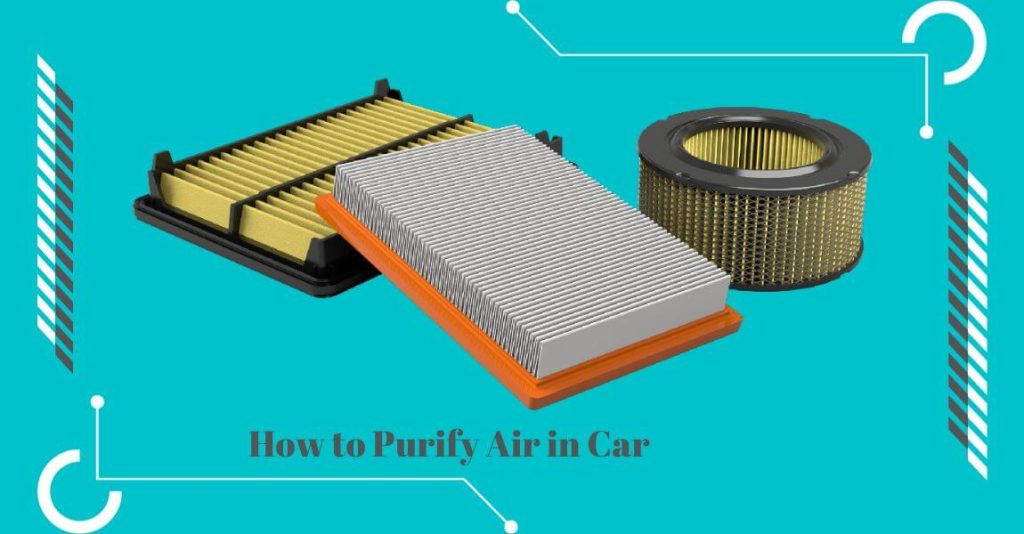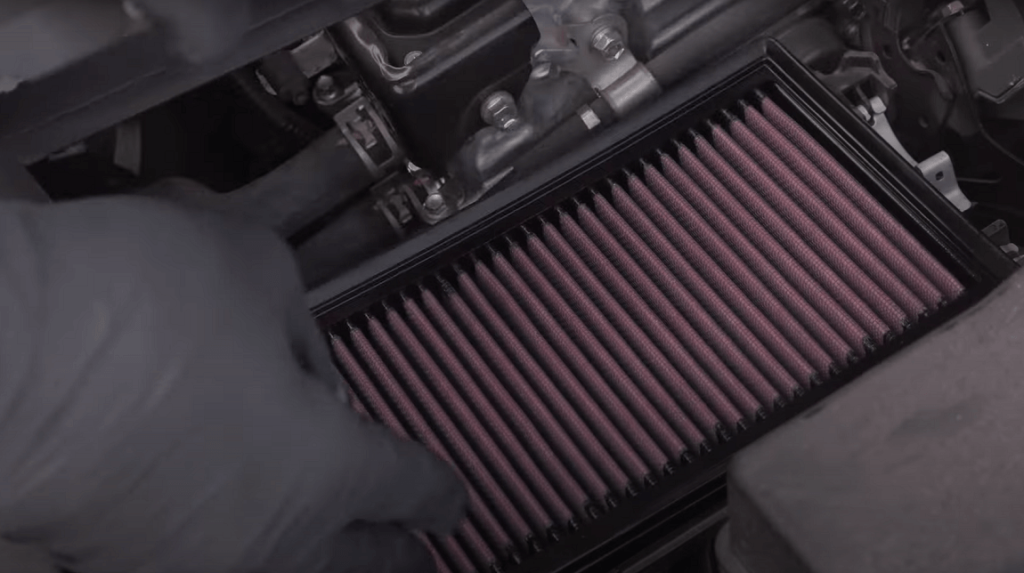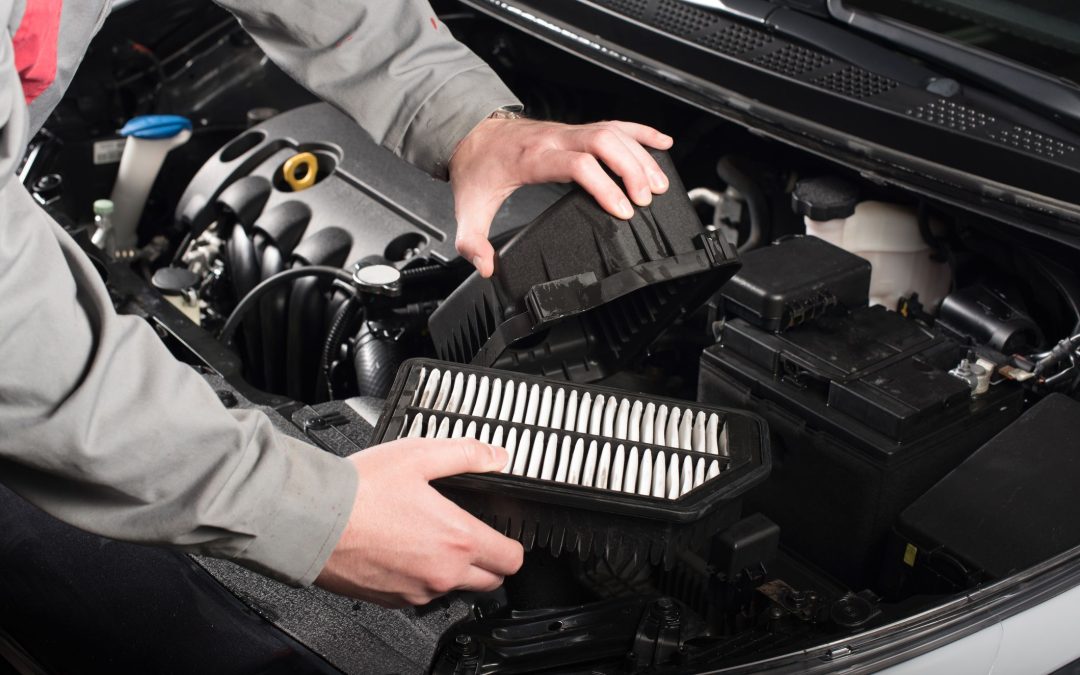This article was updated in September 19, 2023 with new products and information by Mark S. Taylor
To purify the air in a car, use an air purifier specifically designed for vehicle use. This device will effectively remove pollutants and odors, ensuring cleaner and fresher air inside the car.
Breathing in clean and fresh air is essential for our well-being, even when we are on the road. However, the air quality inside a car can often be compromised by pollutants, allergens, and unpleasant odors. These factors can not only make the driving experience uncomfortable but also have adverse effects on our health.
To combat this issue, using an air purifier designed for cars can be a game-changer. An air purifier filters and cleans the air circulating inside the vehicle, removing harmful particles and unpleasant smells. We will explore different methods and tips on how to effectively purify the air in your car, ensuring a healthier and more pleasant driving experience.

Contents
Reasons To Prioritize Air Purification In Your Car
The air we breathe directly impacts our health and well-being, and this holds true even when we’re inside our vehicles. Pollution and contaminants in the air can have a negative effect on our health, leading to various respiratory issues and allergies.
Additionally, the interiors of our cars can easily accumulate dust, dirt, and odors, further compromising the air quality we experience every day. To ensure a healthy and pleasant driving experience, it is crucial to prioritize air purification in your car.
Here are a few key reasons why you should prioritize air purification:
- Pollution and contaminants in the air can negatively affect your health: The air we breathe in our cars can contain pollutants such as exhaust fumes, particulate matter, pollen, and other harmful substances. Prolonged exposure to these contaminants can result in respiratory problems, allergies, and even long-term health issues.
- Poor air quality can lead to respiratory issues and allergies: Breathing in polluted air can irritate your respiratory system and exacerbate allergies, leading to symptoms such as coughing, sneezing, wheezing, and congestion. By purifying the air in your car, you can minimize these health risks and create a healthier environment for yourself and your passengers.
- Car interiors can accumulate dust, dirt, and odors: Over time, the interiors of our cars can become a breeding ground for dust, dirt, and other particles. Carpets, upholstery, and air conditioning systems can trap these particles, causing unpleasant odors and potentially triggering allergies. Regularly purifying the air inside your car helps remove these contaminants and keeps the air fresh and clean.
- Enhanced driving experience: Breathing in clean, purified air can significantly improve your overall driving experience. Fresh air promotes alertness, focus, and a sense of well-being, ensuring that you’re in the best condition to be on the road. You and your passengers will feel more comfortable and enjoy a more pleasant journey when the air in your car is purified.
- Protection for vulnerable individuals: People with pre-existing respiratory conditions, such as asthma or chronic obstructive pulmonary disease (COPD), are especially sensitive to poor air quality. By prioritizing air purification in your car, you can provide a safer and healthier environment for these individuals, reducing the risk of triggering their symptoms.
It’s clear that ensuring clean, purified air in your car is essential for both your health and overall driving experience. By taking the necessary steps to purify the air inside your vehicle, you can minimize the negative impacts of pollution, prevent respiratory issues and allergies, and create a healthier environment for yourself and your passengers.
Understanding Air Purification Systems For Cars
Air pollution is a pressing issue, not just outside but also inside our cars. With the amount of time we spend on the road, it is crucial to ensure the air we breathe inside our vehicles is clean and healthy.
That’s where air purification systems for cars come into play. These systems are designed to remove harmful pollutants and contaminants, providing a safer and more comfortable driving experience. In this section, we will explore the different types of air purification systems available for cars.
Types Of Air Purification Systems Available For Cars
When it comes to purifying the air inside your car, there are a few types of systems you can choose from. Each system functions differently, but the end goal remains the same – to improve the air quality inside your vehicle.
Let’s take a closer look at the most common types of air purification systems for cars:
- Hepa filters: High-efficiency particulate air filters are known for their superior filtration capabilities. These filters can capture airborne particles as small as 0.3 microns, including dust, pollen, and even bacteria. Installing a car air purifier with a HEPA filter can significantly reduce allergens and other pollutants, providing cleaner air for you and your passengers.
- Activated carbon filters: If you’re concerned about unpleasant odors or harmful chemicals inside your car, activated carbon filters are an excellent choice. These filters work by adsorbing (not absorbing) odorous gases and chemical compounds. They effectively neutralize and eliminate bad smells, such as cigarette smoke and pet odors, while also reducing exposure to harmful pollutants like benzene and formaldehyde.
- Ionizers: Ionizers are another type of air purifier commonly used in cars. They work by releasing negatively charged ions into the air, which then attach to positively charged particles such as dust and allergens. This creates larger particles that are easier to capture or settle on surfaces, preventing them from being inhaled. Ionizers are particularly effective at removing airborne particles and can help improve respiratory conditions for a more enjoyable driving experience.
It’s worth noting that many car air purifiers combine different technologies to maximize effectiveness. For example, some units may include both HEPA filters and activated carbon filters for comprehensive air purification. When choosing an air purification system for your car, consider the specific needs of you and your passengers, as well as the level of air pollution in your area.
Having a reliable air purification system in your car can make a significant difference in the overall air quality you and your passengers experience while on the road. Whether you opt for a HEPA filter, activated carbon filter, or ionizer, ensuring clean air inside your vehicle is essential for your well-being.
So, be proactive and invest in a quality air purification system today to enjoy a fresher and healthier driving environment.

Choosing The Right Air Purifier For Your Car
Having clean and fresh air inside your car is crucial for a pleasant driving experience. An air purifier is a great tool that can help you achieve this by removing pollutants and allergens from the air. When selecting the right air purifier for your car, there are a few key factors to consider.
Consider the size and dimensions of your car’s cabin:
- Take into account the size and dimensions of your car’s cabin. Larger vehicles may require a more powerful air purifier to cover the entire space effectively. Measure the dimensions of your car’s cabin to ensure that the purifier you choose will be able to provide adequate air filtration throughout the entire area.
Look for air purifiers with multiple filtration layers:
- Opt for air purifiers that feature multiple filtration layers. This ensures a thorough cleaning process, as different layers are designed to target various types of pollutants. Look for purifiers with a combination of a pre-filter, activated carbon filter, and HEPA (high-efficiency particulate air) filter. The pre-filter captures larger particles like dust and pet hair, while the activated carbon filter absorbs odor-causing molecules, and the HEPA filter effectively removes tiny particles like pollen, smoke, and bacteria.
Check for user-friendly features like adjustable fan speed and indicator lights:
- Choose an air purifier that offers user-friendly features such as adjustable fan speed and indicator lights. Adjustable fan speed allows you to control the airflow and noise level of the purifier according to your preference. Indicator lights can provide helpful information, such as when it’s time to replace the filters or if the purifier is working optimally.
Research customer reviews and ratings before making a purchase:
- Before making your final decision, take the time to research customer reviews and ratings of different air purifier models. This will give you valuable insights into the efficiency and durability of the purifier you are considering. Look for feedback regarding ease of installation, filter replacement, and overall performance. Customer reviews can help you make a more informed decision and ensure that the purifier you choose meets your specific needs.
By considering the size and dimensions of your car’s cabin, opting for air purifiers with multiple filtration layers, checking for user-friendly features, and researching customer reviews and ratings, you can find the perfect air purifier to keep the air in your car fresh and clean.
Breathe easy knowing that you have chosen an effective solution to purify the air and enhance your driving experience.
Steps To Effectively Purify The Air In Your Car
Keeping the air inside your car clean and fresh is essential for a comfortable and healthy driving experience. Poor air quality can lead to respiratory issues and unpleasant odors. Fortunately, there are steps you can take to purify the air in your car and create a more enjoyable environment for your journeys.
Follow these simple tips to ensure that you and your passengers breathe in clean and revitalizing air.
Clean And Vacuum Your Car’S Interior Regularly To Remove Dust And Debris:
- Regularly cleaning and vacuuming your car’s interior is crucial in maintaining good air quality. Dust, dirt, and debris can accumulate over time, leading to poor air circulation. Here’s what you can do to keep your car’s interior clean:
- Use a microfiber cloth to wipe down surfaces, including the dashboard, seats, and door panels.
- Vacuum the carpets and floor mats to remove dust, dirt, and other particles that settle on them.
- Clean the air vents using a brush or compressed air to dislodge any trapped dirt or dust.
Install an air purifier and follow the manufacturer’s Instructions:
- An air purifier is an effective tool for removing pollutants and allergens from the air inside your car. When choosing an air purifier, make sure to consider the size of your car’s interior and the purifier’s recommended coverage area. Follow these steps for installation and use:
- Read the manufacturer’s instructions carefully to understand the installation process.
- Ensure that the purifier is securely placed and won’t obstruct your field of vision while driving.
- Connect the purifier to the power source or activate the battery.
- Turn on the purifier based on the manufacturer’s recommended settings.
Position The Purifier In A Strategic Location Within Your Car:
- The placement of your air purifier is vital for ensuring optimal air purification throughout your car’s interior. Consider the following pointers for strategic positioning:
- Place the purifier in an area where air circulation is prominent, such as near the central air vents or close to the backseat air ducts.
- Avoid obstructing the purifier’s intake or outlet vents to maximize its efficiency.
- Experiment with different positions to find the spot that results in the best air quality.
Turn On The Purifier While Driving Or When The Car Is Parked:
- Operating the air purifier at the right time is crucial for maintaining clean air inside your car. Here’s when you should turn it on:
- While driving: Activating the purifier while you’re on the road helps to filter out pollutants from the outside air that enters through open windows or the ventilation system.
- When parked: Turning on the purifier while your car is parked can help eliminate stale air, odors, and any remaining pollutants from previous trips.
Replace Filters As Recommended To Maintain Optimal Air Quality:
- The filters in your air purifier play a significant role in capturing and trapping particles. Regularly replacing the filters is essential for consistent air purification. Follow these guidelines for filter replacement:
- Refer to the manufacturer’s instructions for the recommended filter replacement schedule.
- Choose high-quality filters that effectively capture pollutants and allergens.
- Replace the filter promptly when it reaches its recommended lifespan.
By following these steps, you can ensure that the air inside your car remains clean and fresh. Regular cleaning, proper installation and positioning of an air purifier, and timely filter replacements are essential for maintaining optimal air quality. Enjoy the benefits of a healthy and rejuvenating driving environment by implementing these easy-to-follow purification tips.
Additional Tips For Improving Air Quality In Your Car
When it comes to maintaining clean and fresh air in your car, there are a few additional tips you can follow. Implementing these practices will not only enhance the quality of the air you breathe but also contribute to a healthier and more pleasant driving experience.
Keep reading to find out more!
Use Natural Air Fresheners, Such As Activated Charcoal Or Essential Oils
- Activated charcoal: This natural odor absorber is highly effective in capturing and neutralizing unpleasant smells. Place a small bag of activated charcoal in your car to absorb pollutants and keep the air fresh.
- Essential oils: Adding a few drops of your favorite essential oils to a diffuser can greatly improve the ambiance and smell of your car. Not only do essential oils provide a pleasant fragrance, but they also offer potential health benefits, such as reducing stress and boosting concentration.
Keep Windows Slightly Open To Improve Air Circulation
- By cracking open your windows, even just a little, you can promote better air circulation within your car. This allows stale air to escape and fresh air to enter, effectively diluting any pollutants present. However, be mindful of the weather conditions and avoid leaving your windows open during rain or in unsafe areas.
Avoid Smoking In Your Car To Reduce The Risk Of Pollutants
- Smoking in your car introduces harmful pollutants, such as nicotine and secondhand smoke, which can linger for an extended period. To maintain good air quality, it’s best to refrain from smoking or allowing others to smoke in your vehicle. By doing so, you’ll protect yourself and your passengers from exposure to hazardous substances.
Regularly Change Your Car’S Cabin Air Filter For Better Filtration
- The cabin air filter is responsible for capturing dust, pollen, and other particles that enter your car through the ventilation system. Over time, this filter can become clogged and lose its efficiency, leading to poor air quality. Make sure to check your car’s manual or consult a mechanic to determine the recommended frequency for changing your cabin air filter. By doing this, you’ll ensure that it continues to effectively filter the air you breathe inside your car.
Implementing these additional tips for improving air quality in your car will not only make your driving experience more enjoyable but will also contribute to your overall health and well-being. So, take care of your car’s air quality and breathe easy on the road!
Frequently Asked Questions On How To Purify Air In Car
What is the best way to purify the air in your car?
The best way to purify the air in your car is to use a car air purifier. These devices are designed to remove pollutants, allergens, and odors from the cabin air, ensuring you breathe cleaner and fresher air while driving.
Do air purifiers work in cars?
Yes, air purifiers designed for cars are effective at improving air quality inside your vehicle. They use filters and sometimes additional technologies like ionization or UV-C to capture and neutralize airborne particles, including dust, pollen, smoke, and odors.
How do you purify air quickly?
To purify air quickly, consider these tips:
Use a high-quality air purifier with a strong fan that can circulate and filter the air rapidly.
Ensure good ventilation by opening windows and doors to allow fresh outdoor air to replace indoor air.
Avoid smoking or using strong-smelling chemicals indoors.
Keep your home or car clean to minimize the buildup of dust and allergens.
Does AC do air purification?
Air conditioning (AC) systems can help improve indoor air quality to some extent by filtering out large particles. However, they are not primarily designed for air purification. To enhance air purification, consider using a dedicated air purifier alongside your AC system.
Does a car air purifier remove smells?
Yes, car air purifiers are effective at removing odors, including those from smoke, food, pets, and other sources. Many car air purifiers feature activated carbon filters that can adsorb and neutralize odorous particles, leaving your car smelling fresh.
Conclusion
To achieve fresher and cleaner air inside your car, implementing the right air purification strategies is crucial. By regularly cleaning the interior, using natural air fresheners, and investing in an air purifier designed for vehicles, you can significantly improve the air quality while driving.
Remember to check and replace the cabin air filter periodically, as it plays a vital role in removing dust, pollen, and pollutants. Additionally, practicing good hygiene habits such as avoiding smoking and eating in the car can help maintain a healthier environment.
Purifying the air in your car not only ensures your well-being, but it also enhances the overall driving experience. So, take the necessary steps to keep the air inside your car clean and revitalizing for a more enjoyable journey.

